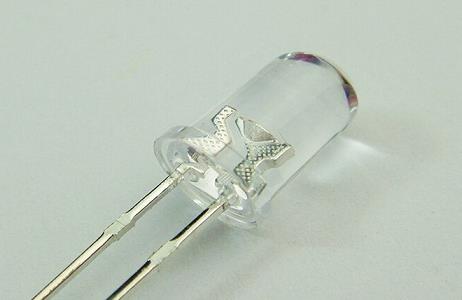Light-emitting diodes, referred to as LEDs, are made of compounds containing gallium (Ga), arsenic (As), phosphorus (P), nitrogen (N), and others.
When the electron and hole complex can radiate visible light, so it can be used to make light-emitting diodes. They are used as indicator lights in circuits and instruments, or to form text or digital displays. Gallium arsenide diodes emit red light, gallium phosphide diodes emit green light, silicon carbide diodes emit yellow light, and gallium nitride diodes emit blue light. Due to the chemical nature of the organic light-emitting diodes OLED and inorganic light-emitting diodes LED.
Light-emitting diode is a commonly used light-emitting device that releases energy to emit light by compounding electrons and holes, and it is widely used in the field of lighting. [1] Light-emitting diodes can efficiently convert electrical energy into light energy and have a wide range of uses in modern society, such as lighting, flat panel displays, medical devices, etc.
This electronic component appeared as early as 1962, the early can only emit low luminosity of red light, after the development of other monochromatic light version, today can emit light has spread across visible light, infrared and ultraviolet, the luminosity has also increased to a considerable luminosity. And the use of the initial as an indicator, display board, etc.; with the continuous progress of technology, light-emitting diodes have been widely used in displays and lighting.

Light-emitting diode principle
Light-emitting diodes and ordinary diodes are composed of a PN junction, but also has a one-way conductivity. When the light-emitting diode with a forward voltage, from the P region into the N region of the hole and from the N region into the P region of the electron, in the PN junction near a few microns with the N region of the electron and the P region of the hole complex, resulting in spontaneous radiation of fluorescence. The energy states of electrons and holes in different semiconductor materials are different.
When the electron and hole complexes released when the amount of energy is different, the more energy released, the shorter the wavelength of the light emitted. Commonly used is the diode that emits red, green or yellow light. The reverse breakdown voltage of light-emitting diodes is greater than 5 volts. It has a steep forward voltammetric curve and must be used in series with a current limiting resistor to control the current through the diode.
The core part of a light-emitting diode is a wafer consisting of a P-type semiconductor and an N-type semiconductor, with a transition layer between the P-type semiconductor and the N-type semiconductor called a PN junction. PN junction in some semiconductor materials, the injection of a few carriers and the majority of carriers compound will release excess energy in the form of light, thereby directly converting electrical energy into light energy. pn junction plus reverse voltage, a few carriers difficult to inject, so not light.
When it is in the forward operating state (i.e., both ends plus forward voltage), the current flow from the LED anode to the cathode, the semiconductor crystal will emit different colors of light from ultraviolet to infrared, the intensity of light and current-related.



